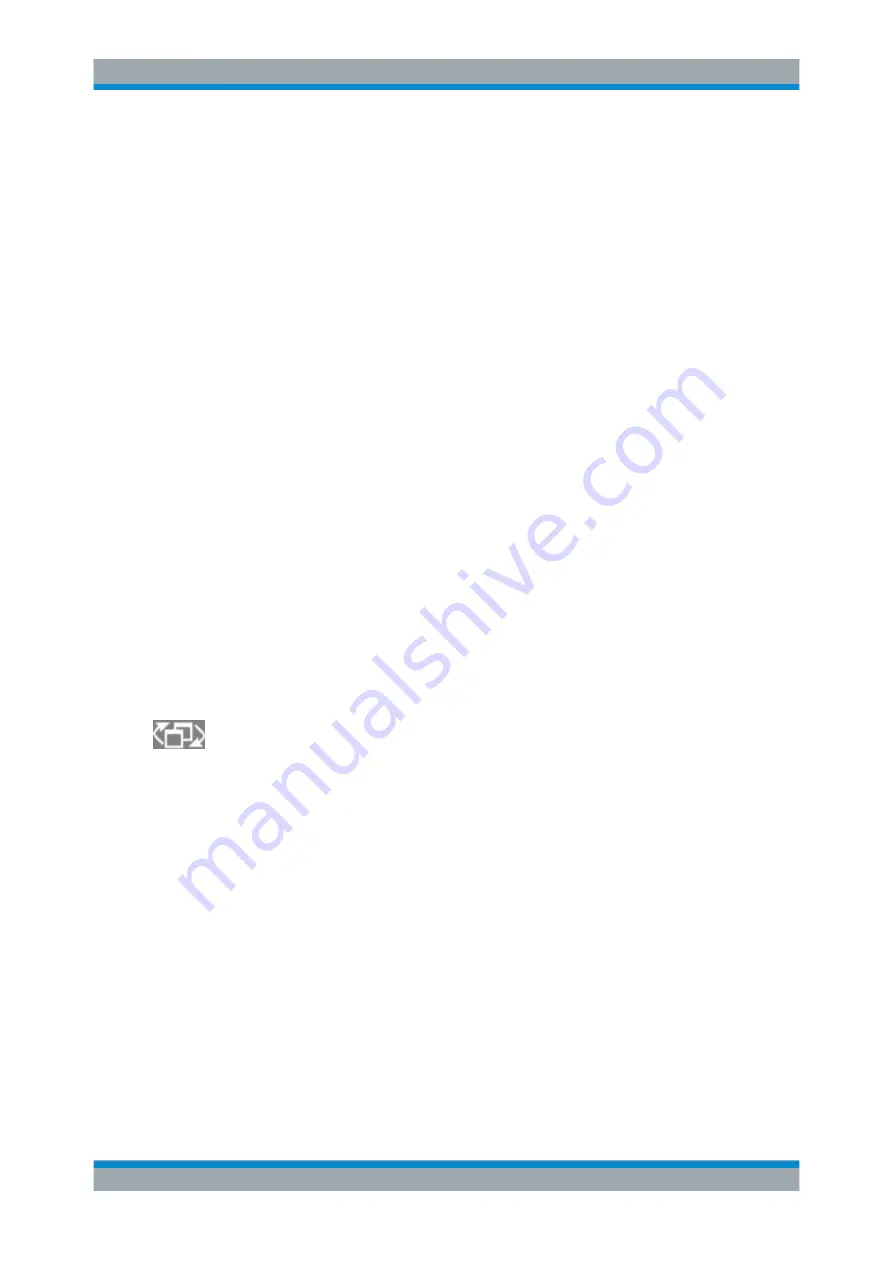
Getting Started
R&S
®
FSW
83
User Manual 1173.9411.02 ─ 19
3.4.2 Accessing the Functionality
All tasks necessary to operate the instrument can be performed using this user inter-
face. Apart from instrument specific keys, all other keys that correspond to an external
keyboard (e.g. arrow keys, ENTER key) operate conform to Microsoft.
For most tasks, there are at least 2 alternative methods to perform them:
●
Using the touchscreen
●
Using other elements provided by the front panel, e.g. the keypad, rotary knob, or
arrow and position keys.
The measurement and instrument functions and settings can be accessed by selecting
one of the following elements:
●
System and function keys on the front panel of the instrument
●
Softkeys on the touchscreen
●
Context-sensitive menus for specific elements on the touchscreen
●
Icons on the tool bar in the touchscreen
●
Displayed setting on the touchscreen
3.4.3 Changing the Focus
Any selected function is always performed on the currently focused element in the dis-
play, e.g. a dialog field, diagram, or table row. Which element is focused is indicated by
a blue frame (diagram, window, table) or is otherwise highlighted (softkey, marker etc.).
Moving the focus is most easily done by tapping on the element on the touchscreen.
Alternatively, use the "Tab" key on the on-screen keyboard or the rotary knob to move
the focus from one element to the next on the display.
To move the focus between any displayed diagrams or tables in a window, press the
"Change focus" key on the front panel. The focus moves from the diagram to the first
table to the next table etc. and then back to the diagram, within the same window.
In fullscreen mode, where a single window is displayed in full size on the screen, this
key switches the focus (and the display) from one active window to the next.
3.4.4 Entering Data
Data can be entered in dialog boxes using one of the following methods:
●
Using the touchscreen, via the online keyboard
●
Using other elements provided by the front panel, e.g. the keypad, rotary knob, or
navigation keys
The rotary knob acts like the ENTER key when it is pressed.
●
Using a connected external keyboard
Operating the Instrument






























